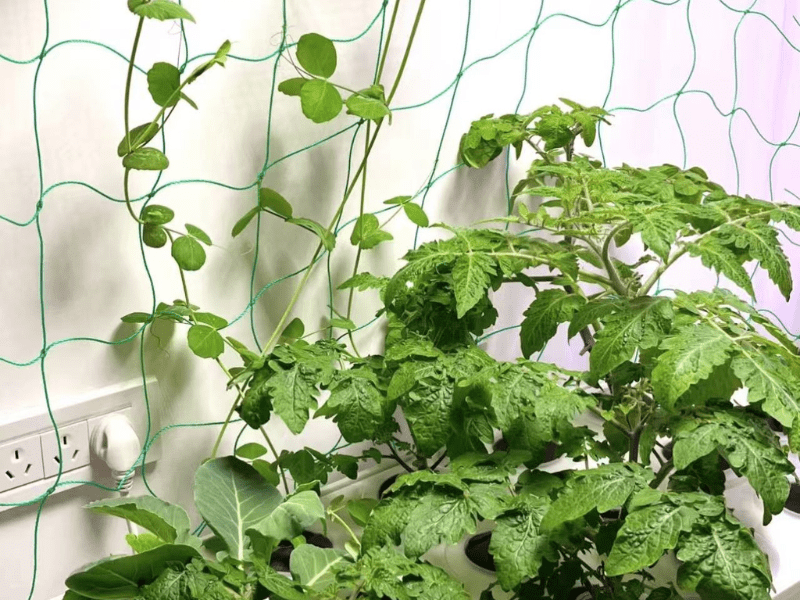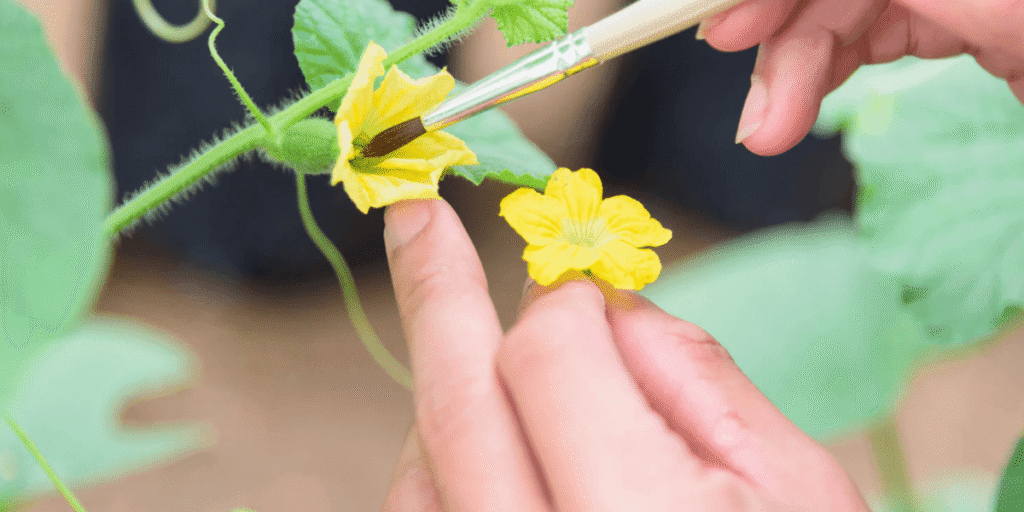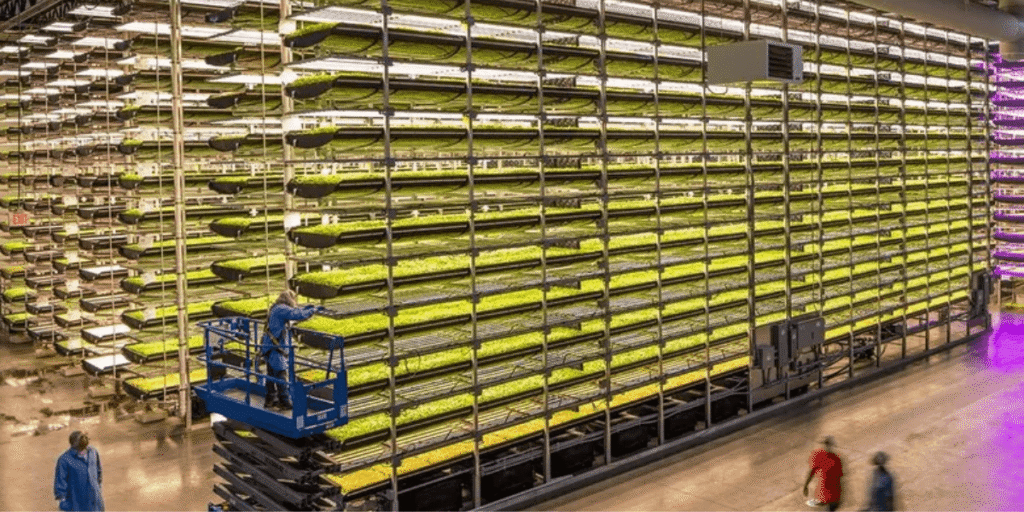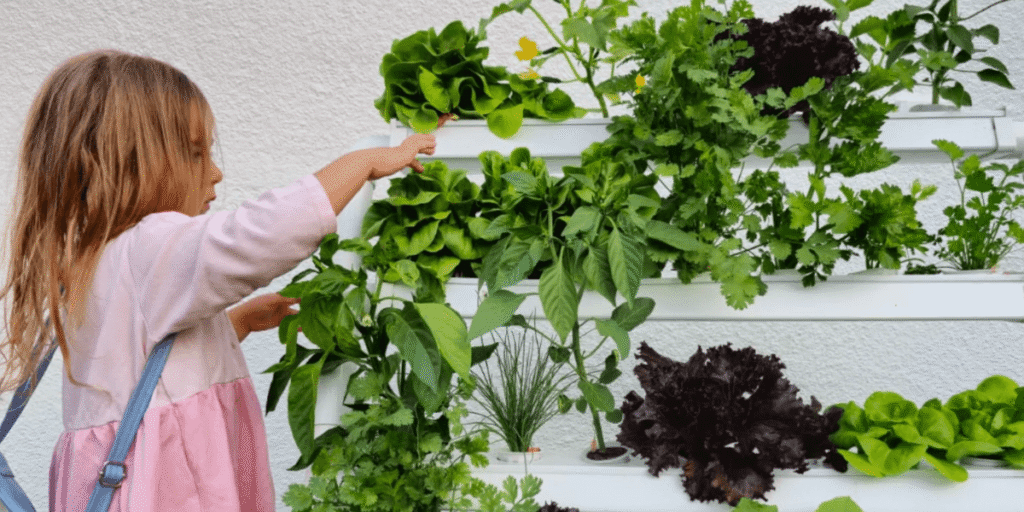Hydroponic Plants Pollinated properly is a crucial step many growers overlook. In the Greenfuturehydro community, there’s a grower named Lina. She set up a hydroponic tower in the corner of her kitchen, filled with 🍅 tomatoes, 🍓 strawberries, and 🌶️ peppers. The nutrient solution was perfectly balanced, the lighting system was in place, and every day her family eagerly gathered around the lush green plants, excited for the harvest.
But after a month, despite many flowers blooming, no fruit appeared. Lina started to wonder, “Is there something wrong with my hydroponic setup?”
This is a common story we hear. The problem wasn’t the system or nutrients, but the critical step of pollination,how pollinate successfully to produce fruit.
Why Pollination Matters in Hydroponics
Pollination is the crucial life step that takes flowering plants from “blooming” to “fruiting.”
Whether grown in soil or hydroponically, fruiting plants like tomatoes, peppers, cucumbers, and strawberries must complete pollination — the process where pollen is transferred from the male stamen to the female pistil.
In natural soil environments, bees, wind, and insects help plants accomplish this task.
But in Lina’s hydroponic setup, there’s no wind, no insects, and windows rarely open. This means natural pollination isn’t possible, making manual pollination absolutely necessary.
Quick Fact: What happens if pollination doesn’t occur?
- Flowers will naturally drop off after just a few days
- Fruits may become deformed or fail to develop at all
- Nutrients get wasted, and plants grow leggy without producing fruit
Self or Cross-Pollinating: Know Your Plants
After some research, Lina discovered that not all plants pollinate the same way.
| Type | Pollination Method | Examples | Recommended Action |
|---|---|---|---|
| Self-pollinating | One flower can pollinate itself | Tomatoes , Peppers , Eggplants | Shake, vibrate, or use a fan |
| Cross-pollinating | Male and female flowers are separate, requiring help | Pumpkins , Cucumbers , Zucchini | Manually collect pollen and pollinate female flowers |
Lina’s tomatoes and peppers are self-pollinating plants. In theory, they can pollinate themselves — but what’s missing is the crucial step of “vibration.”
Manual Pollination: 4 Simple Indoor Methods
1. Toothbrush Vibration: A Handy Pollination Trick
- Lina’s top recommended method: gently touch the flower stem with an electric toothbrush to create vibrations, helping the pollen naturally fall onto the pistil.
She found that doing this around midday, when the light is strongest, worked best. After three weeks, fruits finally started to form!
✔️ Suitable for: Tomatoes, Peppers, Eggplants
✔️ Tools: Electric toothbrush, vibration wand

2. Pollinating with Swabs or Brushes
- She also tried gently brushing tomato flowers with a makeup brush to transfer pollen. Though less efficient than the toothbrush method, it’s still much better than no pollination at all.
✔️ Suitable for: Strawberries, Cucumbers, Pumpkins (requires identifying male and female flowers)
⚠️ Use a clean cotton swab for each flower to avoid cross-contamination.
3. Simulate Wind Indoors for Better Pollination
- Lina installed a mini USB fan that runs for 10 minutes daily, helping pollen disperse. While not as direct as vibration, it can assist in boosting pollination rates.
✔️ Suitable for systems with multiple plants
✔️ Keep fan speed low to avoid drying out petals
4. Tap to Pollinate: Quick and Easy Fix
- Sometimes Lina gently taps the hydroponic tower’s frame to indirectly shake the stems and release pollen. This is a simple emergency technique when no tools are available.
✔️ Easy to do but less precise
⚠️ Not recommended when flowers are too wet or too dry
Top Pollination Mistakes in Hydroponic Setups
Lina also experienced a few pollination failures and identified these “hidden troublemakers”:
High Humidity:
Excess moisture causes pollen to clump together, making it hard to spread. It’s best to keep indoor humidity between 50–70%.
Inappropriate Temperature:
The ideal pollination temperature is between 20–28°C (68–82°F). When it’s above 35°C (95°F) or below 15°C (59°F), pollen viability drops significantly.
Insufficient Light:
Just because the flowers look beautiful doesn’t mean the pollen is healthy. After upgrading to full-spectrum LED lights with a UV-enhancement module, Lina saw a clear improvement in fruit set rates.
What Changed After Lina Pollinated Correctly?
After a fruitless first month of flowering, Lina learned how to pollinate her plants properly.
By the second month, she successfully harvested 12 small tomatoes and 4 peppers,
and by the third month, her strawberries started producing fruit too!
She proudly shared her results on Instagram @Greenfuturehydro,where her post got tons of likes!

Pollination: Soil vs. Hydroponic Plants
In soil, nature does most of the work — bees, butterflies, wind, rain, all help pollinate the plants. But hydroponic systems are mostly sealed indoors, with no wind or insects, so pollination relies entirely on human intervention.
| Aspect | Soil-Grown Plants | Hydroponic Plants |
|---|---|---|
| Natural Pollination? | Wind, insects, rain | Usually indoor and closed off, environment controlled |
| Pollination Efficiency | Natural but unpredictable | Controlled but requires manual effort |
| Fruit Set Rate | High but random | Stable but depends on manual pollination |
| Tools Needed | Almost none | Brushes, electric toothbrushes, etc. |
👩🌾 Lina realized that hydroponic growing is a kind of “precision ecosystem” — every step needs your active care.

Why Flowers Still Drop After Pollination
Lina ran into this issue too and came to these conclusions after some analysis:
- High humidity during pollination → pollen clumps and can’t spread
- Insufficient light → plants “decide” fruit won’t develop and drop flowers
- Potassium or calcium deficiency → lots of flowers, but few fruits set
- Pollination done too late → pollen past its peak viability
- Pollinating too often → flowers get damaged or pistils accidentally hurt
🌟 Pollination is truly an art of “just right”!

Pollination Timing Tips for Fruiting Plants
Lina’s experiments covered many common hydroponic plants. Here’s her handy Pollination Cheat Sheet for everyone:
| Plant | Pollination Type | Best Timing | Recommended Method | Notes |
|---|---|---|---|---|
| 🍅 Tomato | Self-pollinating | Days 1–3 after flower opens | Electric toothbrush vibration, gentle tapping on stems | Pollen activity drops late in bloom |
| 🌶️ Pepper | Self-pollinating | Daily between 10 AM–2 PM | Small brush, vibration tool | Keep light and temperature at 22–28°C |
| 🍓 Strawberry | Mostly self-pollinating but needs help | 2 days before flowering | Circular brushing, gentle fan breeze | Pollinate each flower once, no repeats |
| 🥒 Cucumber | Cross-pollination (male & female flowers) | Male flower bloom morning | Touch male flower to female stigma | Effective only in the morning; male flower withers after one use |
| 🎃 Pumpkin | Cross-pollination | Early morning 5–9 AM | Lightly touch and sway female flower | Flowers open only one day, morning only |
| 🍆 Eggplant | Self-pollinating | Within 3 days before full bloom | Electric vibration method | High heat and humidity reduce pollination success |
| 🌻 Sunflower (ornamental/edible) | Multiple florets, cross-pollination | Early morning to late morning | Cotton swab to gently brush flower centers | Dense flower heads require even coverage |
Lina’s takeaway: Different plants have their own “perfect bloom timing” for pollination — miss it, and you’ll have to wait for the next cycle!
Common Grower Questions About Pollination
Q1: My strawberries have flowers and fruits, but the fruits are very small. Why?
A: This usually means incomplete pollination. We recommend using a brush to evenly pollinate each flower.
Q2: My pumpkin plants only have male flowers, no female flowers. What should I do?
A: Be patient and wait for the female flowers to open. Female flowers have a small swollen base—that’s where the fruit will grow.
Q3: Do I need to pollinate every day?
A: No, you don’t. Most pollen is most active during the first two days after the flower opens. One manual pollination around midday is usually enough.
Q4: Can over-pollination harm my plants?
A: No, it won’t. Proper pollination won’t damage the plants; instead, it helps increase fruit set.
Q5: Can I rely on natural airflow indoors for pollination in my hydroponic setup?
A: Usually not. Indoor hydroponic systems are often sealed with little airflow, so natural pollination by wind or insects is minimal. That’s why manual pollination or using small fans to simulate wind is important to ensure good fruit set.
Pollination Skills That Boost Yields
Lina transformed from a hydroponic newbie who just “waited for fruits” into a gardening pro who actively controls her plants’ fate. She realized that in a hydroponic system,where natural pollinators are absent,pollination isn’t just a technical task; it’s a deep, rewarding interaction with her plants.
Hydroponics doesn’t mean less work; it’s a “romantic way to nurture plants using technology.”
More Hydroponic Tips for Better Fruit Sets
Follow us 👉 Greenfuturehydro.com
We regularly share real-time hydroponic updates, growing knowledge, and interactive Q&A to help you master hydroponics with ease! Instagram: @Greenfuturehydro
If you have any hydroponic questions or want to share your growing success stories, feel free to leave a comment or send us a direct message. We’re happy to support you every step of the way!
For any questions, you can always reach out to our expert technical team.
Interested in any hydroponic systems? Please visit the equipment products page on our website for more details.


